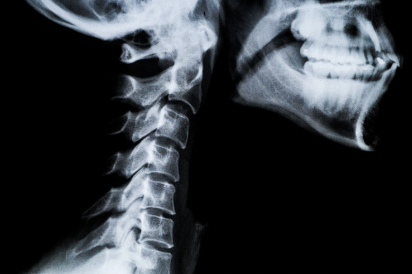MEDIAL BRANCH BLOCKS
Medial branch blocks are used to diagnose and/or treat facet joint pain. It involves a process of injecting the joint or its nerve supply with local anaesthetic. If the pain is substantially eliminated while the anaesthetic is acting, it is assumed that the facet joint is the source of the pain. the injection process is known as a block because the aim is to 'block' out the pain.
THE DIAGNOSIS OF FACET JOINT PAIN
Facet joint pain typically presents with low back pain with, or without referred pain into the leg. Sometimes, facet joints can be damaged in accidents such as a car crash, and may not always show up in an x-ray, CT scan or MRI scanning.
By injecting the facet joint or its nerve supply with a local anaesthetic, we can tell if the facet joint is the source of pain. We can target the nerve supply, as well as the joint itself, because the nerve supply to the facet joint is connected to the spinal cord via medial branches called the adjacent dorsal rami - hence why they are called medial branch blocks.
Studies show that a successful block means that there is a 70% chance that the diagnosis is facet joint pain.
This means that sometimes incorrect diagnoses of facet joint-caused pain do occur. A second positive block increases our certainty to 90%.
Medial branch blocks are used for stubborn chronic pain if specific treatment to the facet joint is required. This treatment is known as radio-frequency neurotomy (RFN) or radio-frequency denervation. This involves applying heat lesions to the nerve and can lead to prolonged pain relief.
INJECTION PROTOCOL
The main reason for the injection is to determine whether or not the pain is altered in the 6 hours after the injection. Therefore, it is important to having a scoring method to record pain levels. A common method is the Visual Analog Scale (VAS), which rates pain from 0 to 10. Zero being no pain and 10 being almost unattainable pain that prevents a person from thinking, moving, or functioning at all. No pain medication should be taken on the injection day to ensure a true measure of change is observed. Pain should measure at least 4/10 on the day of the injection.
THE PROCEDURE
The injection involves a needle through the skin under an x-ray machine. The needle is placed directly onto bone, and is not much thicker than an acupuncture needles. Generally only 1-2 facet joint levels are investigated at a time to ensure the diagnosis is specific to a level in the lumbar spine.
It is normal to feel anxious about the injection, but rest assured, they are very safe, generally not too painful, and can be done quickly.
WHAT TO DO AFTERWARDS?
You should be driven home after the procedure.
1-2 weeks later:
if the first injection successfully blocked the pain, another confirmatory injection will be administered - radio-frequency neurotomy (RFN) should benefit you at this point
if there is no relief, it may be necessary to investigate other levels - this may still involve another set of injections but will be determined by your doctor: no relief means that facet joints are not the cause of the pain
you should describe pain separately for different areas, for example back and leg pain - this can help doctors better assess recommendations for further treatment
MORE ON THE PAIN CHART
You should rate your pain between 0 and 10 before your injection, and after for 6 hours, firstly in 30 minute intervals and then hourly intervals. Ratings should be conducted in terms of movements and how you feel doing the things that most aggravate the pain.



